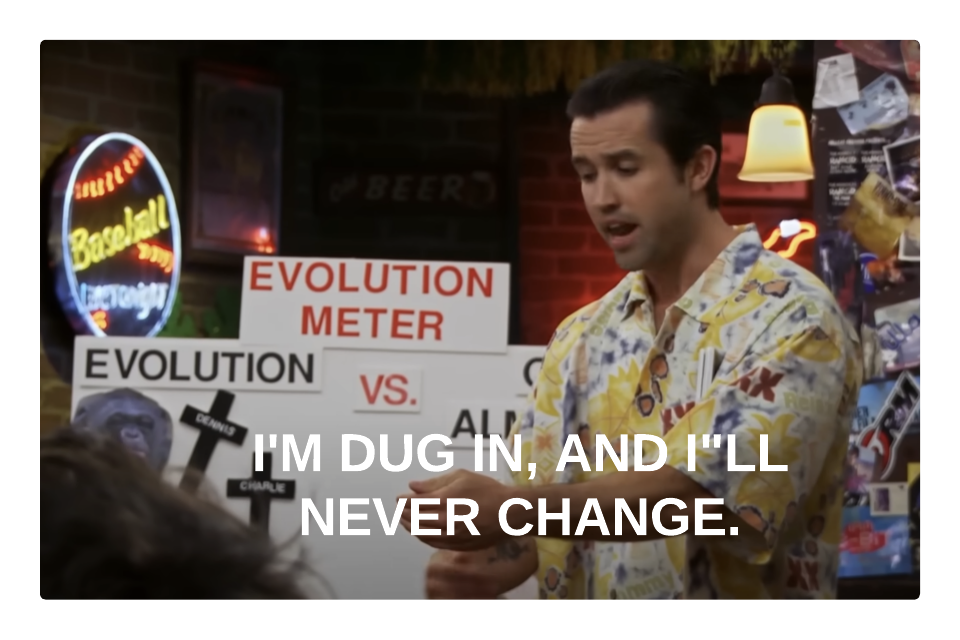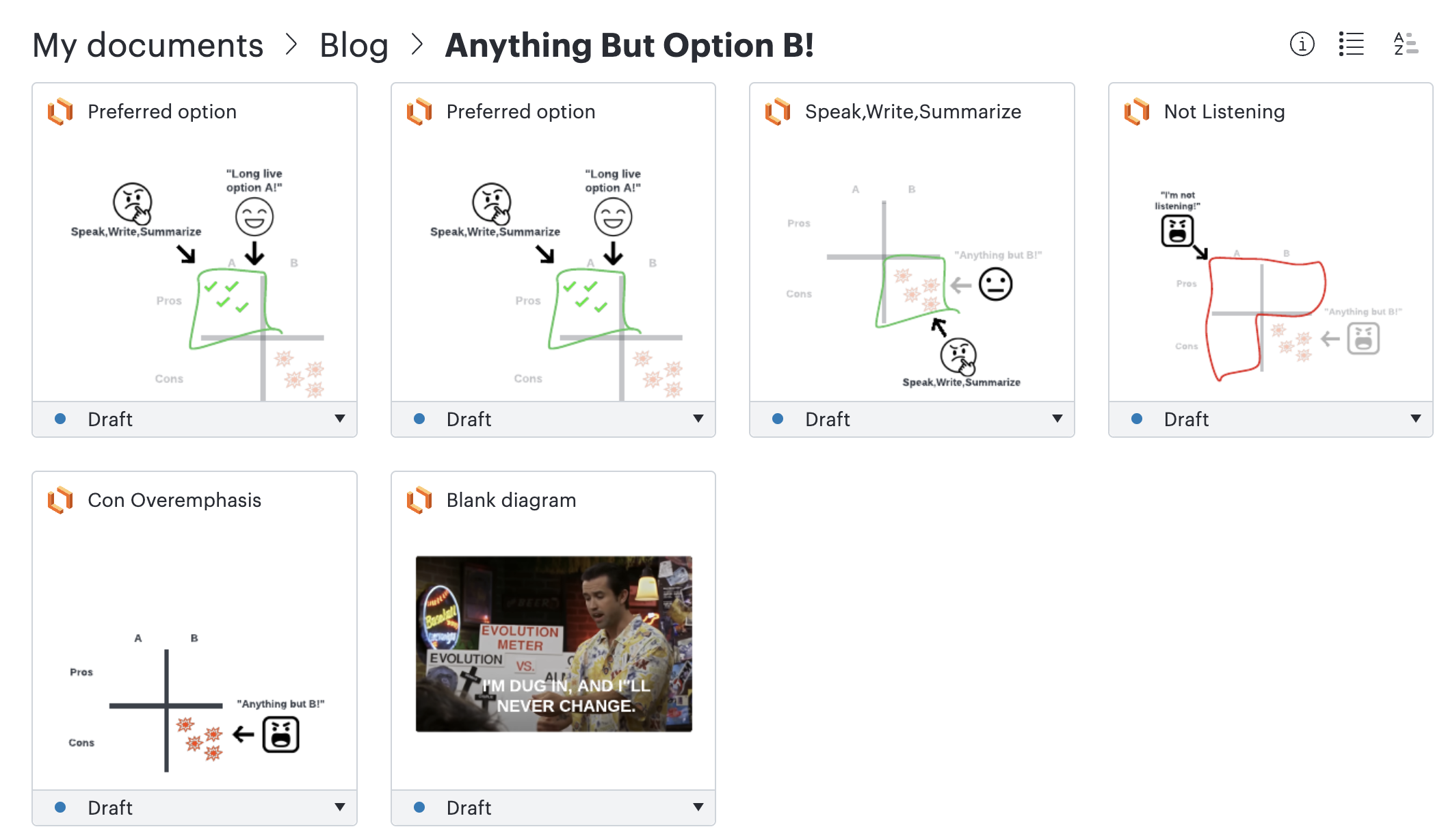Anything But Option B!
I won’t change my mind on anything, regardless of the facts that are set out before me. I’m dug in. And I’ll never change. - Mac from It’s Always Sunny In Philadelphia

Over the last 4 years, I’ve spent over 2000+ hours facilitating technical brainstorming discussions with hundreds of people. Gnarly and complex problems are frequent and quick decision making is paramount. Differing opinions are a given - but occasionally a team member falls into the “Anything but option B!” trap. I define it as a dysfunctional hyperfocus on the cons associated with a given option.
I’ve certainly fallen into this trap. Sometimes option B looks like garbage from your perspective. However, that is the value of collaborating - they can help pull your blinders off. Easier said than done - especially when you are “dug in”. In this post, I’ll review five simple steps to help you move the discussion forward in a way that leaves the group in a position to make the best decision and keep your relationships intact.
Step 1: Focus on making them believe you understand their criticisms
After someone lays down some damage and gives their input tearing apart option B it is important to make sure they believe they are understood. This is the only way to avoid them looping back through the cons repetitively.
Transgression: Knee-Jerk Moving On
A common knee-jerk reaction is to immediately move the conversation forward focusing on other pros/cons. I would consider this a bad move. It often results in people talking past each other and the conversation goes in circles.
Correct path: Speak, write, summarize their input
I’ve found the best path forward is to write down what they’ve said, verbally speak it back to them, and give my spin on the summary of their feedback. Not only does this make them feel heard, but you’ll be shocked at just how often you didn’t understand what they said!
Step 2: Switch focus to their preferred option
The next easiest target is going to be pulling out what they believe are the pros associated with their preferred option A. By hearing them out and playing it back to them you will not only have fully utilized their passion, but they will also be more committed to the final decision knowing that their inputs were understood.
Step 3: Fill in the remaining pros/cons
At this point, the person with the “Anything but B” mentality should be subdued enough that you can gather feedback from the remaining team members without them feeling the need to interject or interrupt. This phase can be uncomfortable but it is important to push through and make sure each member of the team (including yourself) is also heard and understood.
Step 4: Gather recommendations
It is now time to go around the group and allow everyone the opportunity to make an informed recommendation. Do not assume anyone’s preference since it may have changed throughout the discussion. I’m always amazed at how often my recommendation changes once all of the facts are in. You truly can go farther together. If you can make it to this step where each member’s input is recorded (and they feel heard) then 9 times out of ten you will get a unanimous recommendation.
Step 5: Make the decision
When there are conflicting recommendations you’ll want to designate someone as the final approver. As a rule of thumb, I try to make it the person who has the most to lose if the decision is suboptimal - often this is an accountable leader. Let the approver state their intended choice before finalizing it and allow members of the team a last opportunity to filibuster. Sometimes their true feedback doesn’t come out until the threat of the final decision.
Summary
Treat team members who fall into the “Anything but option B!” trap with kindness, listen deeply/openly, and confirm your understanding of their input often. Push for that same level of respect to be given to the rest of the team members including yourself. Make the decision when there are no words left to be said.



